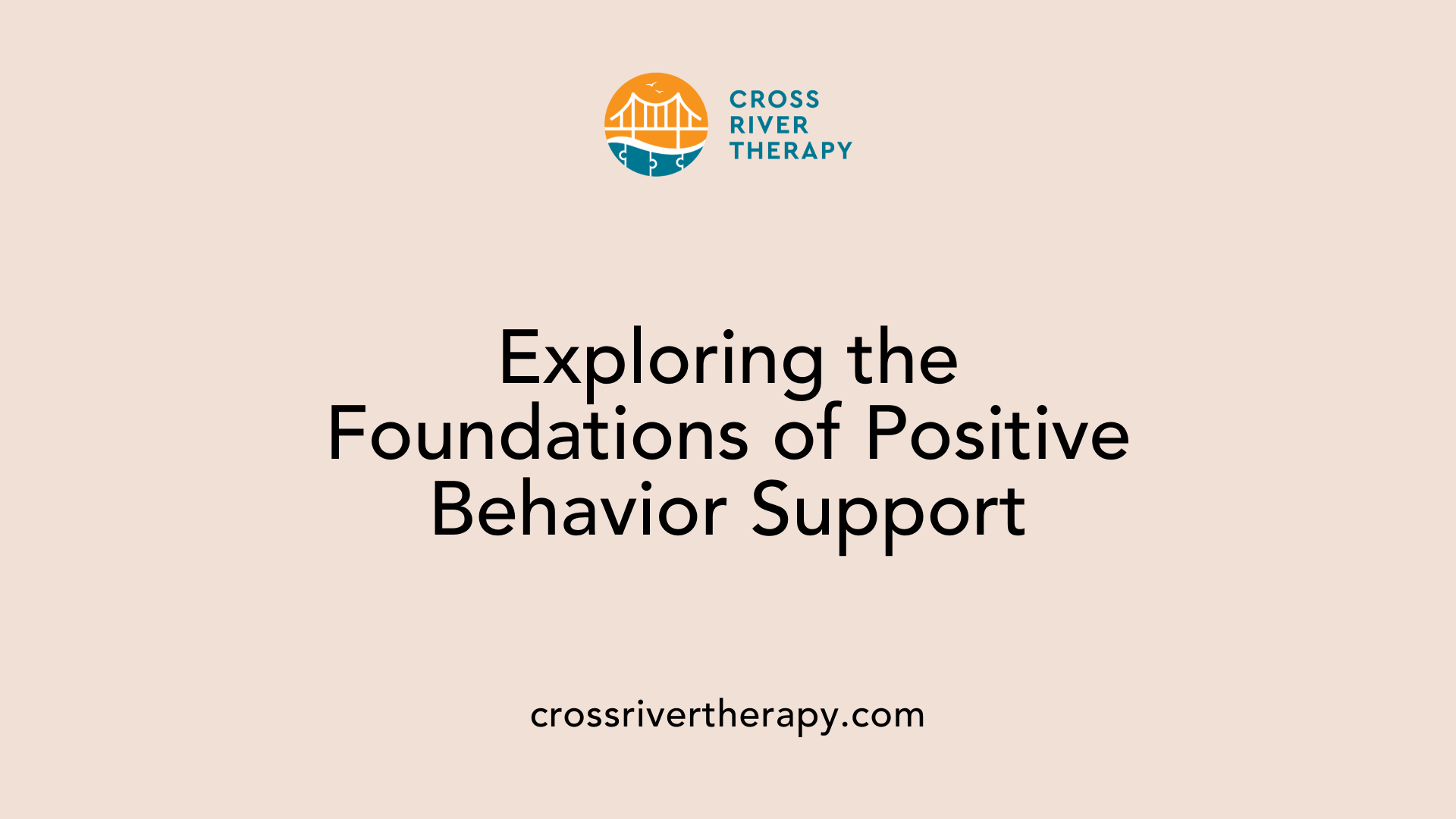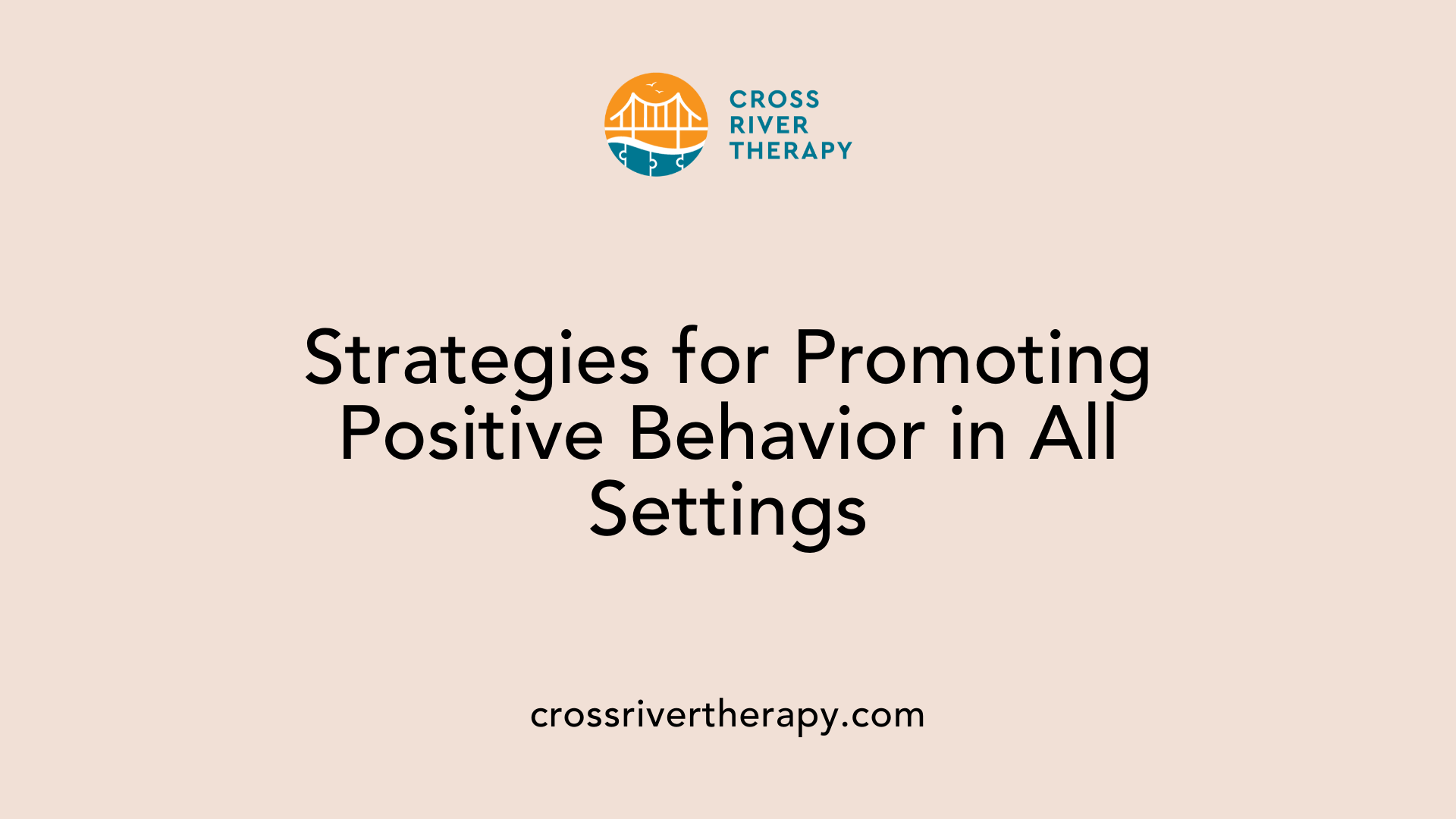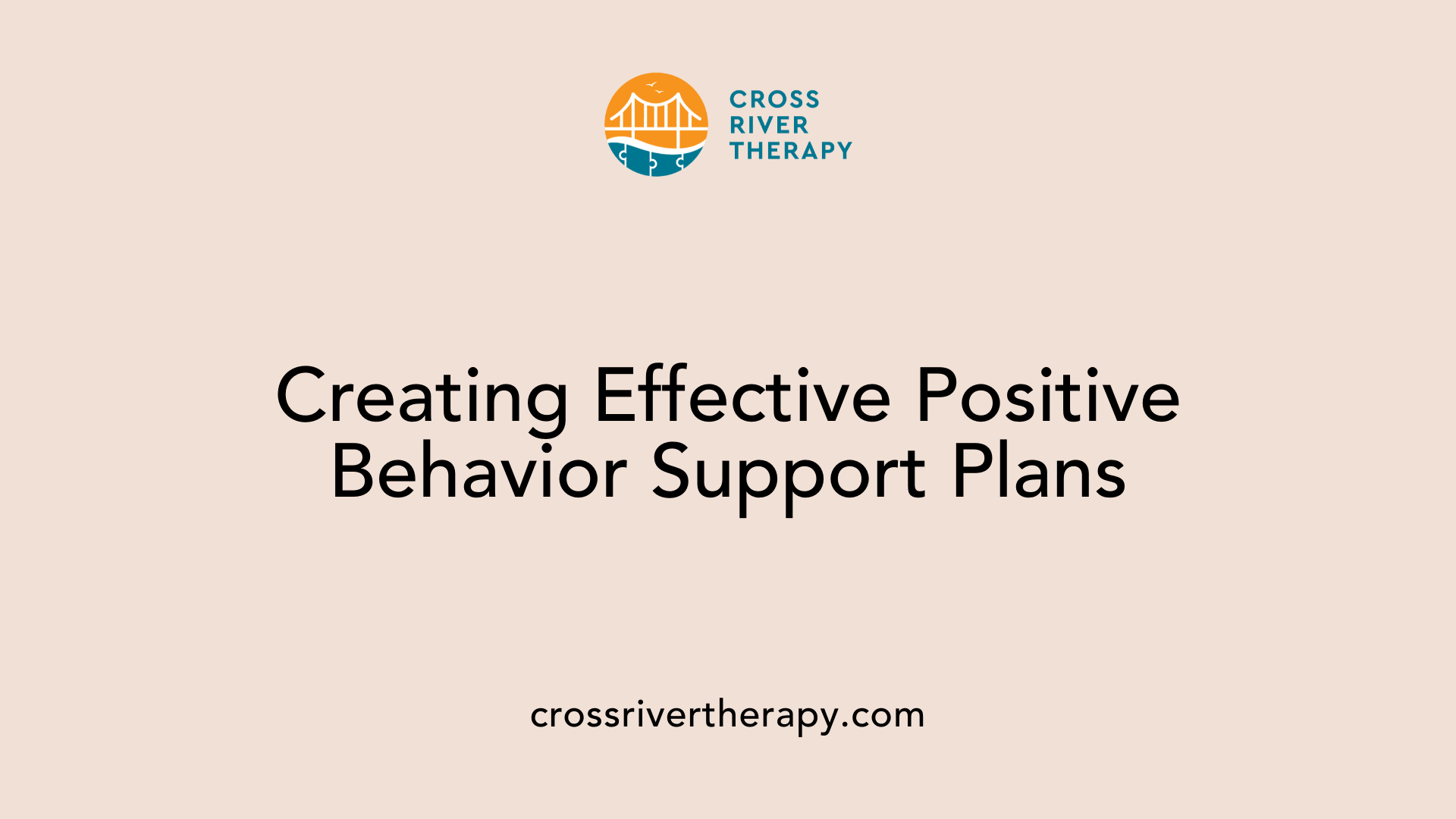Promoting Positive Behavior in Autism
Encouraging Development and Positive Conduct in Autistic Individuals
Understanding the Framework of Positive Behavior Support
Positive Behavior Support (PBS) is a comprehensive and person-centered approach designed to improve the quality of life for individuals with autism. It prioritizes dignity, safety, and the reduction of anxiety and distress by recognizing the reasons behind challenging behaviors. By working collaboratively with professionals and caregivers, PBS acknowledges the importance of tailored strategies to support autistic individuals. This article delves into the principles of PBS, how it distinguishes itself from other approaches, and the strategies that foster positive behaviors in diverse settings.
Principles and Approaches of Positive Behavior Support

Understanding Positive Behavior Support
Positive Behavior Support (PBS) is a holistic, person-centered approach designed to improve the quality of life for individuals with autism by fostering a safe environment. Its core aim is to promote dignity while addressing behaviors that pose challenges. By emphasizing understanding, PBS involves comprehending why an individual might experience distress and how their surroundings affect their actions. This initial insight forms the bedrock for developing personalized support strategies that minimize anxiety and enhance emotional well-being.
What are intervention strategies for autism?
Intervention strategies tailored for autism are extensive and must cater to each individual's unique needs. Key techniques include:
- Applied Behavior Analysis (ABA): Employing behavioral principles systematically to promote skill development.
- Cognitive Behavioral Interventions (CBI): Aiming to modify detrimental thought patterns.
- Social Skills Training (SST): Enhancing social interaction capabilities.
- Functional Communication Training (FCT): Aiding in improving communication skills.
- Occupational Therapy: Enhancing daily functioning and independence.
Regular assessments of these strategies are crucial, ensuring continuous advancement in meeting the personal needs of individuals with autism.
Temple Grandin's insights on environments
Temple Grandin, a notable advocate for autism awareness, emphasizes that designing environments tailored to the sensory needs of autistic individuals can significantly mitigate stress. By creating sensory-friendly areas, such as quiet spaces with minimal distractions, caregivers can foster more conducive spaces for relaxation and focus. This insight underscores the importance of considering environmental factors in support strategies, aligning closely with the principles of PBS to promote positive behavior effectively.
Implementing Positive Behavior Through Reinforcement
Reinforcement Techniques
Positive reinforcement is a crucial method in encouraging desirable behaviors among individuals with autism. This technique uses rewards to increase the likelihood of positive actions being repeated. Effective forms of reinforcement include:
- Verbal Praise: Providing immediate acknowledgment when a child shares a toy or completes a task solidifies the connection between the behavior and the reward.
- Special Treats or Activities: Tailoring rewards that resonate with a child's interests—such as a trip to the park—can enhance their motivation.
- Token Economies: Using tokens as currency for privileges can effectively reinforce consistent positive behavior.
PBS and ABA in Practice
Positive Behavior Support (PBS) integrates seamlessly with Applied Behavior Analysis (ABA) to improve outcomes for autistic children. PBS prioritizes understanding and addressing the root causes of behaviors rather than simply reacting to them. In practice, this may involve:
- Collaborative Plans: Caregivers and professionals work together to craft individualized support strategies based on thorough behavioral assessments.
- Functional Behavioral Assessment: This assessment identifies triggers and allows for tailored interventions that focus on encouraging positive behaviors.
In summary, implementing positive reinforcement within the frameworks of PBS and ABA can significantly improve behavior and promote general well-being for children with autism. By consistently applying these principles, caregivers can foster an environment that supports learning and emotional growth.
Promoting Positive Behavior in Autism: Key Strategies
How can positive behavior be encouraged in individuals with autism?
Encouraging positive behavior in individuals with autism involves creating supportive environments that promote calmness and self-expression. Establishing clear rules and providing concise instructions is key—focus on what to do rather than what not to do. For instance, using visual supports such as schedules can offer the predictability that many autistic individuals thrive on.
Incorporating special interests into learning activities not only enhances engagement but also makes participation more likely. When children see relevance and excitement in tasks, they're more inclined to approach them positively.
Emotional regulation is another critical component; teaching decision-making skills empowers autistic individuals to manage their responses effectively. Coping strategies can help them navigate overwhelming situations, reducing the likelihood of negative behaviors.
Practical Behavioral Strategies
Regularly praising specific positive behaviors is essential for enhancing self-esteem. A suggested ratio of five positive interactions for every one negative comment can reinforce desired actions effectively.
Moreover, understanding any underlying sensory sensitivities presents opportunities to address potential triggers that may lead to behavioral challenges. Recognizing these factors fosters a deeper connection to their needs, allowing caregivers to create a tailored approach for improving overall well-being.
Creating Supportive Environments with Structured Routines

Importance of Supportive Environments
Creating supportive environments for children with autism is essential for promoting their overall well-being and development. These environments instill a sense of security that aligns with their needs, minimizing anxiety and enhancing comfort.
Visual supports, such as schedules and communication aids, play a crucial role. They clarify expectations, making transitions between activities smoother and allowing children to anticipate what comes next. Furthermore, designated quiet spaces are vital for managing sensory overload, promoting emotional regulation.
Structured Routines for Children
Structured routines provide predictability, which is especially beneficial for children with autism. Predictability helps in reducing stress and confusion, enabling children to focus on learning and engagement.
By establishing a consistent schedule, caregivers can help children navigate through various activities, empowering them with a better understanding of their day-to-day routines. This approach not only aids in fostering independence but also supports crucial social skills development.
In summary, supportive environments combined with structured routines create a foundation for successful learning and development in children with autism.
Effective Strategies for Managing Behavior Across Settings

What strategies can be used to promote positive behavior?
To promote positive behavior, schools and caregivers can adopt a range of effective techniques that foster a respectful and productive environment. Here are some notable strategies:
- Set Clear Expectations: Outlining specific behavior expectations helps children understand what is required of them.
- Use Positive Reinforcement: Rewarding good actions immediately increases the likelihood that these behaviors will be repeated. This can include verbal praise, tokens, or privileges.
- Model Exemplary Behavior: Adults should demonstrate appropriate behaviors as children often learn through observation. This includes exhibiting coping and conflict resolution skills.
- Build Strong Relationships: Establishing trust and rapport with students fosters a sense of belonging and cooperation, which can significantly reduce challenging behaviors.
- Engage Students: Lessons should be interactive and relevant to keep students interested and participating actively.
- Implement Positive Behavior Support (PBS): Understanding the functions of behavior can help in addressing triggers and implementing targeted strategies effectively.
Behavior Management Techniques
In addition to PBS principles, here are some supplementary techniques:
- Visual Supports: Using visual schedules and social stories aids comprehension and reduces anxiety by clarifying expected behaviors.
- Structured Routines: Creating a predictable daily routine minimizes uncertainty, contributing to emotional stability and improved behavior.
- Coping Skills Training: Teaching children how to manage their emotions during stressful situations leads to more acceptable responses.
- Incorporate Choices: Allowing children to make limited choices promotes a sense of agency and can mitigate resistance.
These strategies not only enhance the classroom environment but also contribute to a broader understanding of the social and emotional dynamics that influence behavior in children, especially those on the autism spectrum.
Personalized Approaches to Reinforcing Positive Behaviors
What reinforcement techniques and personalized approaches can be used to encourage positive behaviors?
To encourage positive behaviors, various reinforcement techniques and individualized strategies can be utilized. Positive reinforcement, which introduces a desirable stimulus following a behavior, effectively increases the likelihood of that behavior recurring. Different types of positive reinforcement include natural, token, social, and tangible reinforcers, allowing for customization based on individual preferences and contexts.
In educational settings, strategies like behavior-specific praise and maintaining a praise-to-correction ratio of 5:1 are particularly beneficial. This approach enhances student engagement while reducing misbehavior. For instance, recognizing a child’s effort to greet a peer can reinforce social skills.
Additionally, employing visual aids, such as reward charts, provides motivation by representing clear progress, further promoting positive behaviors. These tools help children understand their achievements and encourage continued compliance with desired actions, fostering an overall supportive atmosphere.
How can Positive Behavior Support strategies be effective?
Positive Behavior Support (PBS) strategies play a critical role in shaping constructive behaviors. These strategies are personalized and involve ongoing collaboration with educators, caregivers, and therapists to create effective, tailored support plans. This individualized approach recognizes each child’s unique strengths and challenges.
Moreover, integrating techniques like social stories and visual schedules aids in teaching social norms and clarifying daily routines. By anticipating distress triggers and proactively creating a supportive environment, PBS can significantly reduce anxiety and facilitate smoother interactions, ultimately enhancing the quality of life for children with autism.
Developing and Implementing Positive Behavior Support Plans

What is a positive behavior support plan for autism?
A positive behavior support (PBS) plan for autism serves as a structured framework designed to minimize problem behaviors and enhance overall quality of life. This comprehensive strategy is grounded in applied behavior analysis (ABA) and typically incorporates three essential components:
- Antecedent and Setting Event Strategies: These involve identifying and modifying triggers in the environment that may lead to challenging behaviors.
- Teaching New Positive Behaviors: This focuses on equipping individuals with functional skills to replace undesired, problematic behaviors.
- Reinforcement Practices: Increasing positive reinforcement for acceptable behaviors while appropriately managing responses to behaviors of concern is crucial.
The development of a PBS plan begins with a Functional Behavioral Assessment (FBA), which is vital in identifying the underlying causes behind specific behaviors. By understanding these factors, caregivers can devise targeted interventions that address the unique needs of each individual.
What behavioral support strategies are effective?
Effective behavioral support strategies within a PBS plan encompass a variety of approaches, including:
- Environmental Modifications: Changing the child's surroundings to reduce stressors or distractions, such as introducing sensory-friendly spaces.
- Visual Supports: Utilization of visual schedules and social stories to provide clarity and structure, aiding in the understanding of daily routines.
- Consistent Reinforcement: Positive reinforcement techniques, such as praise or token economies, help promote desired behaviors through immediate acknowledgment of success.
- Skill Development: Focusing on coping skills and personal responsibilities lays the groundwork for managing emotions and improving social interactions.
Overall, these tailored strategies aim to create an educational environment where individuals on the autism spectrum can thrive while decreasing the incidence of challenging behaviors.
Differentiating Between PBS and ABA
Comparing PBS and ABA
Positive Behavior Support (PBS) and Applied Behavior Analysis (ABA) are both methodologies used in the realm of autism care. However, they possess distinct approaches to behavior management:
- Focus: PBS takes a holistic approach, focusing on enhancing life's quality through environmental modifications. In contrast, ABA concentrates on individual behavior modification via reinforcement methods.
- Philosophy: While PBS is rooted in ecological and person-centered principles, ABA is more scientific and structured, defined by specific training requirements for practitioners.
- Outcomes: PBS seeks to promote dignity and reduce distress, while ABA aims to modify behaviors by identifying triggers and functions.
This distinction is significant, particularly considering PBS emerged as a counter-response to the aversive practices historically associated with ABA.
Strategies for Autism Care
Despite their differences, both PBS and ABA employ strategies that aim to foster positive behaviors among children with autism. Some effective approaches utilized can include:
| Strategy | Description | Application |
|---|---|---|
| Functional Behavioral Assessment | A foundational method used to understand the triggers behind behaviors. | Individual assessments help target effective interventions. |
| Positive Reinforcement | Encourages desired behaviors through rewards, praise, or tokens. | Helps children to associate positive outcomes with good behavior. |
| Visual Supports | Utilizing tools like visual schedules to provide clarity on routines. | Helps reduce anxiety by creating predictable environments. |
| Collaboration | Engaging caregivers, teachers, and professionals in the development of strategies. | Ensures individualized support plans that cater to unique needs. |
Both PBS and ABA share a core commitment to understanding behaviors in their social contexts. They address the essential need for personalized strategies that align with the strengths and challenges of each child, ultimately promoting positive outcomes.
Practical Guidance for Caregivers and Educators

What resources and guidance are available for caregivers, parents, and educators involved in autism care?
Numerous resources are available for caregivers, parents, and educators involved in autism care, aimed at improving the lives of autistic individuals. A noteworthy resource is the 100 Day Kit for Newly Diagnosed Families, which emphasizes the importance of caregivers prioritizing their own emotional wellbeing. This kit includes various guidelines and support options to help navigate the complexities of autism.
Organizations like the Autism Society of America and the National Autism Association provide invaluable information, support groups, and helplines tailored to assist families as they face the challenges associated with autism.
Additionally, Caregiver Skills Training (CST) programs are available, equipping caregivers with essential skills to efficiently manage care responsibilities. Community support networks and social connections are also vital, alleviating some of the burdens associated with caregiving.
For further educational materials and access to local services, platforms like Autism Navigator and the Autism Resource Center serve as beneficial tools for families tackling autism-related issues. These resources help empower caregivers, allowing them to better support their loved ones while promoting positive behavior and emotional health.
Enhancing Positive Behavior in Educational Settings
What are research-backed tactics for enhancing positive behavior in educational settings?
Research-backed tactics for enhancing positive behavior in educational settings include implementing Positive Behavioral Interventions and Supports (PBIS). This framework emphasizes teaching and reinforcing positive behaviors while providing continuous feedback to students.
Building trusting relationships among teachers, students, and families is crucial for fostering mutual empathy and understanding. Techniques such as using behavior-specific praise can effectively encourage desirable behavior.
Structured routines also play a significant role in promoting a sense of security and predictability for students, helping them to self-regulate better. Check-in/check-out strategies can provide additional support, allowing for reflection on behavior and goals.
Employing non-verbal cues and providing sensory tools can assist students in managing their focus and emotions during lessons. Mindfulness practices and goal-setting activities further promote emotional wellness and responsible decision-making among students, leading to improved overall behavior in school.
Implementing PBS in Schools
Positive Behavior Support (PBS) in schools focuses on creating an environment that nurtures positive behavior while minimizing disruptive behavior. A school-wide PBS plan involves collaboration among educators, support staff, and families, ensuring a consistent approach across various settings.
Key components of effective PBS strategies include clear expectations, visual supports like schedules, and consistent, targeted reinforcement techniques. Schools can utilize tools such as social stories and role-playing to teach appropriate social skills, while structured routines can ease anxiety for students on the autism spectrum. By tailoring PBS interventions to meet individual needs, schools can enhance the educational experience for all students.
Integrating Strategies for Lasting Impact
Promoting positive behavior in individuals with autism is a multifaceted endeavor requiring the cooperation of caregivers, educators, and professionals. Emphasizing strategies that leverage the unique strengths and preferences of each individual ensures that they not only thrive in controlled environments but also achieve greater independence and quality of life. As we continue to learn from empirical research and best practices, fostering environments that are supportive and understanding remains paramount. Advocacy for autism care and education helps bridge gaps in support systems, further nurturing the potential of individuals on the autism spectrum.
References
- Positive Behaviour Support (PBS) - National Autistic Society
- 15 Behavior Strategies for Children on the Autism Spectrum - IBCCES
- Behavioural strategies for autism | The Spectrum
- Positive Behavior Support Plan for Autism: What are the Benefits?
- Positive behaviour for autistic children and teenagers
- [PDF] Positive Behavior Supports in an Autism Classroom
- Tips for Positive Behavior in Autism - Magnet ABA
- 8 Effective Ways to Encourage Positive Behavior in Autism



